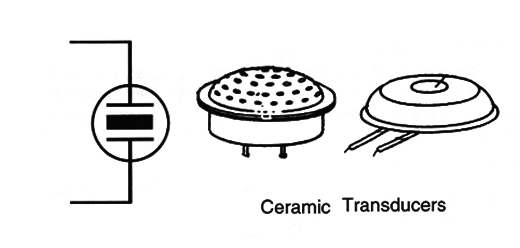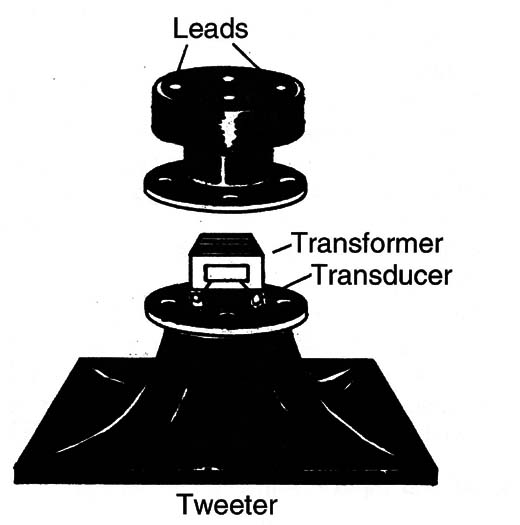When a piezoelectric material is pressed, bent, or submitted-to mechanical efforts or any change of form, electric charges appear in its surfaces.
The same effect also works in the inverse mode; if we apply electric voltages to its surface, a mechanical deformation can occur.
Some ceramic materials such as barium titanate and quartz crystals present piezoelectric properties.
These materials can be used to make piezoelectric transducers, piezoelectric sounders, piezoelectric loudspeakers and earphones, piezoelectric buzzers, and many other devices that convert electric energy into mechanical energy (sound or super sounds) or the opposite, such as microphones, vibration pickups, etc.
Some components are very important in this family:
a) Quartz crystal: When excited by an electric signal quartz crystal tends to vibrate, producing signals of only one frequency. They can be used to determine the operational frequency of many circuits such as those in clocks, watches, computers, radio transmitters and receivers, and many others. The vibration frequency is established by the mechanical resonance of the crystalline plate.
b) Piezoelectric sound generators: A small piece of piezoelectric ceramic can be used to produce sounds in alarms, earphones, and high-frequency loudspeakers (tweeters). When an audio signal is applied, the ceramic vibrates producing sound waves. Ceramic transducers can also be used to produce supersonic sounds.
c) Piezoelectric high-voltage generators: Beating a piece of piezoelectric ceramic with a small, spring-triggered hammer, a ceramic piezoelectric transducer can generate very high-voltage pulses. The high voltage, up to 7000 volts, will produce a spark that is used in gas igniters and in other applications.
d) Piezoelectric microphones: Placing a diaphragm onto a piece of piezoelectric ceramic can be used to convert sounds or beats in electric signals. The sound waves beating the diaphragm make it press the ceramic piece producing the deformations needed to cause the electric signals to appear.
Symbol and Types
Figure 1 shows some piezoelectric transducers and their symbols.

Specifications Normally the piezoelectric components are indicated by a part number determined by the manufacturer.
The quartz crystals are indicated by the frequency. They are high-impedance devices because the ceramic and the quartz are good isolators.
In some cases, a drive circuit can be installed inside the component, such as in piezoelectric buzzers that include an audio oscillator.
Piezoelectric tweeters, for example, include a small impedance match transformer to drive the transducer as shown in Figure 2.

Where they are found
Piezoelectric transducers are found in many applications.
Quartz crystals are found in computers, watches, clocks, transmitters, and many other applications.
The sound transducers are found in earphones, alarms, audio equipment, etc.
Testing
Quartz crystals are tested using proper circuits. The other transducers (ceramic) are tested using oscillators to drive them.



